
by David M. States*
During the 1930s, the Kaiser Wilhelm Institute for Medical Research (KWImF) was one of the most dynamic scientific research laboratories in all of Germany. One of its research directors during this time, Otto Meyerhof, had already won the 1922 Nobel Prize in Physiology. Two others, Richard Kuhn and Walther Bothe, were honored similarly in 1938 and 1954 for their contributions to chemistry and physics. Although the laboratory had less than 150 scientists and staff, four additional scientists who worked at the KWImF during these years would go on to win Nobel Prizes later in their careers. The KWImF is today known as the Max Planck Institute for Medical Research, one of more than fifty research institutes administered by the Max Planck Society.
The abstracts below provide links to longer articles on the development of the KWImF, as well as the lives and work of the scientists involved.
The foundation of the Kaiser Wilhelm Institute for Medical Research
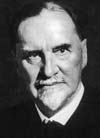
Ludolf von Krehl. Courtesy of Max-Planck-Institut für Medizinische Forschung
The Kaiser Wilhelm Institute for Medical Research was founded in 1929 at the height of one of Germany’s most dynamic periods of scientific development. The KWImF was one of the very first research institutes in the world to integrate diverse scientific disciplines and apply them to biological and medical research. It was comprised of four original departments, or “institutes”: Physiology, Chemistry, Physics and Pathology. The KWImF ws the vision of Ludolf von Krehl, a renowned physician and director of the University of Heidelberg’s Medical Clinic. Krehl engaged the support of the Kaiser Wilhelm Society (KWG) – one of the most prestigious scientific research organizations in the country – and soon attracted a core of extremely talented scientists as fellow research directors. It included physicist Karl W. Hausser, physiologist and Nobel Laureate Otto Meyerhof, and a young rising star in chemistry named Richard Kuhn. With the help of the Kaiser Wilhelm Society president, Adolf von Harnack, Krehl brought this visionary concept to fruition. Their investment was paid back almost immediately as scientists at the Institute played a central role in the development of modern biochemistry during the 1930s.
Richard Kuhn and the Chemical Institute: Double bonds and biological mechanisms
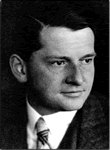
Richard Kuhn. Archiv zur Geschichte der Max-Planck-Gesselschaft, Berlin-Dahlem
Richard Kuhn became Director of the KWImF Chemistry Institute in 1929 and would remain in this post for nearly forty years, leaving an indelible mark on the Institute. Kuhn was both a brilliant thoretician and experimentalist, a master of physical, analytical and organic chemistry. His innate intelligence combined with an almost boundless scientific curiosity and driving professional ambition. Kuhn’s first decade at Heidelberg was extremely productive and dominated by pioneering structural and functional studies of polyenes and vitamins. His creative application of chemical analysis to biological topics during the 1930s contributed profoundly to the early development of modern biochemistry. For chemical analysis of polyenes and vitamins, he was awarded the 1938 Nobel Prize in Chemistry.
Otto Meyerhof and the Physiology Institute: The birth of modern biochemistry
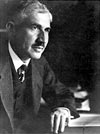
Otto Meyerhof. Courtesy of Walter Meyerhof, son of Otto Meyerhof
Otto Meryerhof was one of the most influential scientific figures during a period in which biochemistry coalesced into a distinct discipline of the natural sciences. Meyerhof’s goal was unraveling the mysteries of intermediate metabolism – the distinct biochemical steps by which raw materials and energy are converted, stored, utilized, expelled or recycled in the cell. For eight years, the KWImF Physiology Institute was one of the most productive laboratories for such research in the world. This Nobel Prize winner’s techniques and analysis, especially the application of the laws of thermodynamics to biological processes, were often the first of their kind. The string of experimental success at the KWImF led to the first complete determination of a metabolic pathway – the glycolytic or Embden-Meyerhof Pathway. Meyerhof’s assistants also played key roles in our understanding of the critical importance of ATP in biological processes. In addition to Meyerhof, four other eventual Nobel Prize winners – Fritz Lipmann, Severo Ochoa, André Lwoff and George Wald – worked at Meyerhof’s institute during the 1930s.
Walther Bothe and the Physics Institute: The early years of nuclear physics
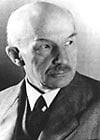
Walther Bothe. Archiv zur Geschichte der Max-Planck-Gesselschaft, Berlin-Dahlem
In 1934, Walther Bothe was chosen to replace Karl W. Hausser as Director of the KWImF Physics Institute. The premature death of Hausser had set in motion the search for a successor, but ideological purges at the University of Heidelberg following Hitler’s seizure of political power also greatly influenced the choice. In short, Ludolf von Krehl and KWG President Max Planck offered the directorship to Bothe as an emergency measure to prevent one of Germany’s leading experimental physicists from leaving the country. Bothe gave no pretense that he would apply his research to medical or biological topics. His team focused instead on investigating the fundamental properties and structure of the atom. Bothe had already begun to develop some of the most innovative methodologies for investigating nuclear reactions, most notably the coincidence method of detection. He and his students’ subsequent research at the KWImF during the 1930s helped to establish the foundations of modern nuclear physics. They were among the first scientists to investigate the nuclear photo-effect, perform nuclear spectroscopic studies, and create artificial isotopes. Bothe would eventually receive the Nobel Prize for his contributions to nuclear physics. Two assistants during this time, Wolfgang Gentner and Heinz Maier-Leibnitz, would later play pivotal roles in helping to reintegrate Germany into the international scientific community during the 1950s and were important figures in the development of CERN in Switzerland and ILL in France.
Personal and national tragedy undermine Krehl’s dream
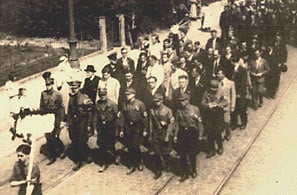
National Socialists marching through the streets of Heidelberg in the 1930s. Photo: Courtesy of Max-Planck-Institut für Medizinische Forschung
The KWImF was barely three years old when Ludolf von Krehl’s idealistic vision for the new multidisciplinary KWImF began to unravel. The deaths of Karl Hausser in 1933 and Krehl four years later would have been difficult enough to contend with under normal circumstances. But these losses were coupled with powerful external political events that changed the entire face of the KWImF. The rise to power of the Nationalist Socialist movement in Germany influenced the emergency appointment of nuclear physicist Walther Bothe in 1934, who had little interest in biological research. And Meyerhof was forced to flee the country in 1938. Although tremendous scientific accomplishments had taken place by the outbreak of the Second World War, the KWImF was reduced to Kuhn’s Chemistry Institute and Bothe’s Nuclear Physics Institute. The work of both these groups would be dramatically curtailed by the war and postwar turmoil. A return to similar levels of scientific accomplishment would only occur after the reformation of the KWImF as the Max Planck Institute for Medical Research in 1948 and the German economic miracle of the 1950s.
The Max Planck Institute for Medical Research today

The Max Planck Institute for Medical Research is the direct descendent of the KWImF and member institute of the Max Planck Society. The MPImF’s current directors of Research are Nobel Laureate Bert Sakmann (Cell Physiology), Kenneth Holmes (Biophysics), Peter Seeburg (Molecular Neurobiology) and Winfried Denk (Biomedical Optics).
* David M. States (b. 1954) lives in California, where he works as a technical writer for the biotechnology industry. He was originally trained as a cultural anthropologist and historian, doing research in fishing villages in California and Portugal. In the 1980s, he began working in the field of science education. During the 1990s he lived in Germany and wrote scientific histories of the European Molecular Biology Organization, the European Molecular Biology Laboratory, and the Max Planck Institute for Medical Research.
First published 28 June 2001